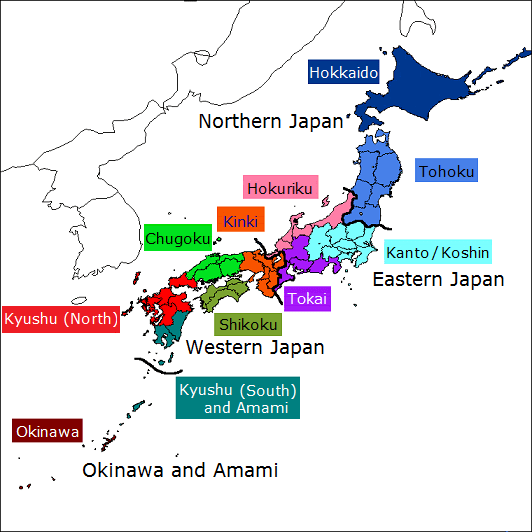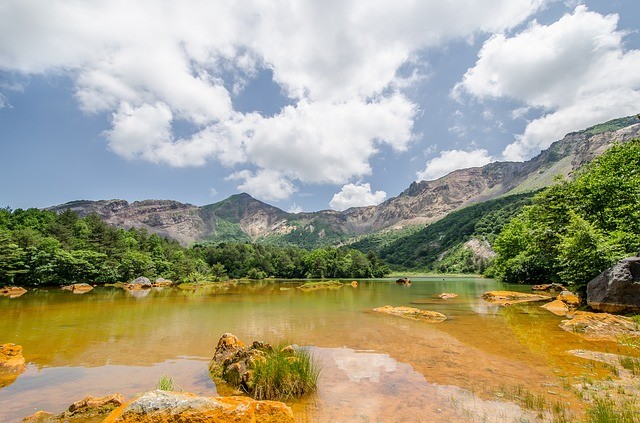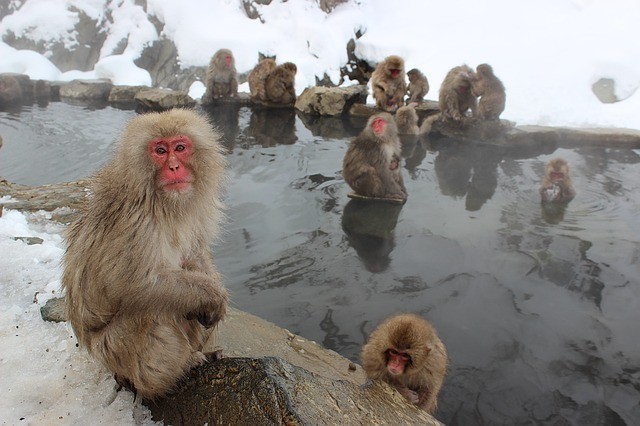Japan experiences 4 beautiful seasons throughout the year. Even though the 4 seasons is a simple natural concept for many, for some reason, people and are not prepared.
Table of Contents
Let’s start with the basics!

Japan is located in the northern hemisphere. Due to its geography, the northern areas experience subarctic weather while the south experience subtropical to tropical weather conditions.
The summer season starts in June while the winter season begins in December. Weather conditions can be quite different between the east side (Pacific side) and the west side of Japan (Sea of Japan side) especially during the core winter and summer seasons.
The Summer: Hot and Humid

Japan as a whole experiences the hot summer season from June to the end of August. Hokkaido maybe the only exception to this as it can be cooler and less humid compared to the rest of Japan. The average temperature countrywide is 27.7 degree with the hottest area reaching up to 39 degrees.
As the summer maybe a fun time to climb mountains, enjoy the beaches, and have barbecues outdoors, a major factor in the summer that causes discomfort is the intense tropical-like humidity combined with the tropical heat. Therefore, the summer can be lethal season as many people can succumb to heatstroke.
Furthermore, heavy rain fall is expected during the summer season so don’t forget to bring some rain gear. If you are traveling near rivers during heavy rainfall, watch out for flood alerts. If you are near mountains, watch out for landslide warnings.
Autumn

The Fall season begins from September to November. In most of Japan, the temperatures start to become nice and cool. Unfortunately, the fall can call upon heavy rains and typhoons so be prepared. The natural scenery of Japan changes as the leaves start turning into a beautiful orange-yellowish hue symbolizing the natural beauty of the fall season.
In terms of comfort, Autumn, is one of the most comfortable times to visit Japan as it is not to hot and not too cold. However, visiting in November can be a bit too cold for some.
Winter

Following the fall is the winter season. The winter seasons start from December to February. It will snow in some places in Japan especially up on the northern areas (starting from mid-November) however most of the snow fall occurs sometime in January and February with the exception of Okinawa.
For some visitors, winter maybe the worst time to be in Japan because it can be very cold and dry.
For people who enjoy the winter sports such as skiing and snowboarding, winter is a great time to visit Japan as Japan has many mountains with a lot a sufficient amount of snow offering many great snow experiences.
Natural onsens also are a great place to visit during the winter because it feels really good to soak the body in naturally heated water enriched with minerals to help soothes and heal the body. Many visitors cherish the onsen experience because it just feels really good.
No Central Heating
People that reside in Japan i.e. both locals and foreign residents may dread the winter season because it simply is too cold, even at home. Most older Japanese homes and old residential buildings (apartments) lack the necessary insulation to help the entire house stay warm. Therefore, you may be warm and comfortable in one room but if you need to go to a different room such as the toilet, you will freeze. In general, older Japanese homes and apartments do not contain sufficient insulation.
However, newer homes may have better insulation with the addition of heated floors. However, people without heating appliances or the basic knowledge to stay warm during the winter seasons can become really uncomfortable and miserable.
As stated before, central heating does exists but it is not the norm in Japan. Having central heating is more of a luxury.
A majority of people rely on kerosene fan heaters, kerosene stoves, kotatsu tables, halogen lamps, and heating air conditioners to stay warm during the winter months.
Relatively Cold Compared to Northern Countries?
Some of the Northern European guys I know say that the coldest winter they ever had was in Japan.
First, I think it was because they underestimated the weather, second is because most homes in Japan do not have central heating.
As stated before, central heating can make a big difference, but as travelers, most hotels do have central heating so you’ll be enjoying the comforts.
Visitors Need not Worry Much
Trains and buses also have some kind of electrical heating system for passengers so traveling in a train or bus in Japan is quite comfortable. Almost all hotels in Japan have central heating.
Youth hostels however may have central heating but don’t count on it. Many of the youth hostels I’ve stayed at rely on portable fuel stoves.
Wide Temperature Range
If you live in the eastern, central, and western areas of Japan, you will most likely experience a wide range of temperatures changes. The temperatures can change drastically throughout the day, having a temperature gap of 20 degrees and more. For example, you wake up at 6 in the morning with the thermostat at -1 degree. During mid-day, the peak temperature can be as warm as 22 degrees. Then the temperature starts drop again as dusk arrives.
So you can be out with fully dressed for winter but in the middle of the day be sweating a lot.
Do not Underestimate the Japanese Winter
As a bit of advice, even if the winter is relatively mild, I would never underestimate the mild winter of Japan. A simple sweater won’t do you justice. It is suggested that you wear multiple layers of clothing to keep comfortable just in case.
A fleece jacket along with a durable gore-tex jacket and some layered pants will keep you really warm and comfortable.
Spring!!!

The Spring season begins from March and ends in May. The average temperature is around 14.5 degrees Celsius which is often greeted with light to moderate rain but with an abundance of sunshine!
Spring is probably the best time to visit as it is not only a very comfortable time to visit but the scenery becomes pink and beautiful from the abundance of cherry blossoms blooming throughout the country.
Spring is also the time of the year when everything starts. From the first day of school to the first day of employment this is why Spring is often associate to life and even death.
The temperatures are about right during the Spring in Japan. It is usually not too cold and not too hot. The humidity is also not bad at being low most of the time.

